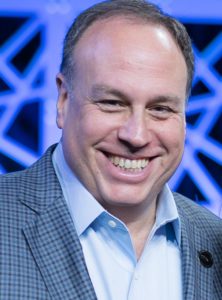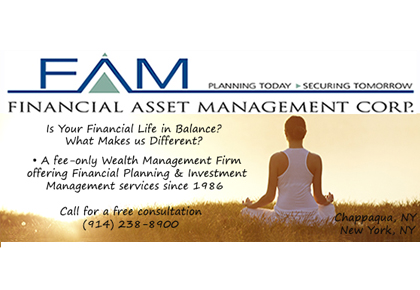Scott Kahan’s Financial Road Trip

Shot of a senior couple going on a road trip
 Scott Kahan’s Financial Road Trip: When it comes to mapping out your financial future you don’t want to be singing, “Do you know the way to San Jose” on the street corner. Scott Kahan, Certified Financial Planner and President of Financial Asset Management Corp. in NYC and Chappaqua, told us “developing a financial plan is like mapping out a trip – the final destination and all the stops on the way.”
Scott Kahan’s Financial Road Trip: When it comes to mapping out your financial future you don’t want to be singing, “Do you know the way to San Jose” on the street corner. Scott Kahan, Certified Financial Planner and President of Financial Asset Management Corp. in NYC and Chappaqua, told us “developing a financial plan is like mapping out a trip – the final destination and all the stops on the way.”
What’s the first step in financial planning?
Financial planning doesn’t start with products or what kind of return you want. Anybody can recommend products. Financial planning starts with defining your goals and objectives.
Imagine getting in the car and not knowing where you are going or where you want to stop along the way. Are you saving to buy a car, a second home, to finance college or for retirement. And what kind of retirement do you envision for yourself?
These are your destinations and each, because they have different time horizons, will determine the risk level appropriate for the portfolio of products you put in play to help you get there.
Then you can map out your trip?
 Yes, financial planning is a mapped out process. There are six steps. First, we establish your goals. Step two is gathering the relevant information – the data. Step three is analyzing the data. Then we develop your plan, implement your plan and monitor it.
Yes, financial planning is a mapped out process. There are six steps. First, we establish your goals. Step two is gathering the relevant information – the data. Step three is analyzing the data. Then we develop your plan, implement your plan and monitor it.
The key here is identifying what is achievable. You may want to retire early but you also have to save for college. So you may have to work a little longer. Perhaps you can do both but you won’t be able to retire where you want to. So we work with clients, through open discussions, to identify the trade offs they are willing to make. Then we develop a baseline plan.
So in a way it all starts with cash flow?
 Cash flow is an important part of it. We start with determining how much you need to save for college, a second home or retirement. But if those savings plans create cash flow problems you have to change your savings plans or change your spending habits.
Cash flow is an important part of it. We start with determining how much you need to save for college, a second home or retirement. But if those savings plans create cash flow problems you have to change your savings plans or change your spending habits.
We sometime ask our clients, if you had 12 months to live what would be most important to you. Only the client can make these value decisions. Figuring out the quality of life you want can be difficult. Helping people discover their road map is more important than the product recommendations.
What if there’s an accident along the way?
That’s where insurance comes in. What if you lose your job, get sick or get sued. Life, disability, liability insurance and, of course and emergency fund, is part of the groundwork that gets factored into a cash flow analysis before we start buying stocks and bonds.
 Life insurance is often sold as a retirement vehicle but it is really protection against lost income. As you build up your assets, your life insurance needs go down. Usually a lower cost insurance policy is the way to go. If you fully fund your college and retirement funds you won’t need as much life insurance.
Life insurance is often sold as a retirement vehicle but it is really protection against lost income. As you build up your assets, your life insurance needs go down. Usually a lower cost insurance policy is the way to go. If you fully fund your college and retirement funds you won’t need as much life insurance.
People overlook liability insurance. Do you have a dog? What if your dog bites somebody and causes permanent damage – you have a lawsuit. Having enough liability insurance is an important part of your insurance plan.
We also recommend people “buy up” in the disability plans their company offers. Especially younger people who may not have a lot of assets yet – statistically they are more likely to become long term or permanently disabled than dying in an accident. Long-term care insurance should also be part of your considerations. Younger people don’t need it but if you wait too long it gets expensive. We recommend people look at it when they are in their 50s.
Once you have your objectives, how do you start building a portfolio?
First we have to determine the client’s appetite for risk. And, as discussed, you will have a different risk tolerance when building a portfolio against each of your objectives – each stop on the road.
 In your retirement portfolio, your risk preferences should not be affected by short-term swings in the market. People tend to have more appetite for risk when stocks are going up and lose their appetite when stocks drop. This is not the way to go. Your definition of risk tolerance should be a long-term one in a retirement plan. And because you may live longer than you planned you shouldn’t be too conservative. Retirement plans need growth elements too.
In your retirement portfolio, your risk preferences should not be affected by short-term swings in the market. People tend to have more appetite for risk when stocks are going up and lose their appetite when stocks drop. This is not the way to go. Your definition of risk tolerance should be a long-term one in a retirement plan. And because you may live longer than you planned you shouldn’t be too conservative. Retirement plans need growth elements too.
If you are planning for college or to buy a second home in the near future – you will want to limit your risk for that portion of your portfolio – the shorter your horizon the more conservative your plan. 529 College Savings Plans, by the way, are the best way to save for college. You get tax-free growth and if you’re in a NY plan as a NY resident you can get up to a $10,000 state tax deduction in any year.
How do taxes factor in?

We look at tax planning with our clients but in reality there’s not a lot you can do for tax planning. Fully funding your 401k or IRA is the best thing you can do. Salaried employees should look at Health Savings Accounts (HSA’s).If you’re in a very high tax bracket than we look at capital gains oriented investments in the taxable portion of your portfolio since income investments will be taxed at a higher rate. And tax-free muni bonds may be appropriate for the bond allocations in your taxable investments.
Then we look at your non-taxable accounts with an eye towards balancing your overall stock and bond allocations, which is why our clients often wind up with more income investments in retirement accounts.
What about estate planning?

People with less than $10.9 million in assets, the current limit on inheritance, don’t have to get too involved in estate planning. But there are other issues that we have our clients address sooner than later.
People have to look at taking care of wills – but estate planning is more than a will, because if you have beneficiaries on your accounts they are going to override the will.
But there are other things like living wills, health care proxies, power of attorney if someone should become incapacitated, and naming guardians for your kids. We like to make sure our clients have filed all these forms as early as possible.
Financial Asset Management Corporation has provided fee-only financial planning and wealth management services for individuals and small businesses in the Tri-State area since 1986. They serve 150 clients and manage over 200 million dollars in assets. FAM Corp. President Scott Kahan is a Certified Financial Planner professional. (Financial Asset Management Corp., 26 South Greeley Avenue, Chappaqua, NY, (914) 238-8900; www.famcorporation.com)
















